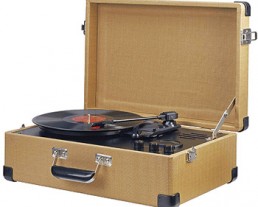Ear Training is an important part of your growth as a Musician. There are many aspects of Music that can become part of your Ear Training very easily. In fact, opportunities to practice these skills are all around you everyday!
Notes
I can remember many Friday morning classes, listening to Intervals played one note at a time. We’d try to name the interval, using memorable tunes in our heads as a reference. (The NBC jingle, ‘Mary Had a Little Lamb’, ‘My Bonnie Lies Over the Ocean’, and the like.) It wasn’t until years later that it became clear to me that this may not be the best way to tune one’s ears to hearing harmonies. And, unless we’re working with melodies, it’s not how Music occurs in our lives.
When we analyze melodies, we hear intervals in steps or skips. But, when we listen to and analyze harmony, we hear intervals as part of a chord*. The chord produces a consonant or dissonant sound. These sounds are what we’re used to hearing everyday. It would seem to make sense to play and learn intervals this way, in addition to the melodic fashion. You will be hearing chords and melodies in gig situations, which you may have to analyze and play on the spot to cover your part. It is vital that you train your ears to identify what you hear quickly and accurately.
You can practice this type of ear training all the time. If you carry a cell phone, what’s the pitch or melody of your ringtone? How about other phones ringing around you? What’s the pitch of the ding in that elevator that you just rode? How about car horns? Video games. (BTW…The 2 Wii Sports jingles when launching the game are in keys that are a 1/2 step apart.)
Rhythm
 Rhythm is around us, in many forms, all the time. Whether it’s in one of the examples above, in a song on your iPod, the radio, a public address system, or even Music on hold, there are dozens of times each day that you can train your ears to recognize and transcribe rhythms.
Rhythm is around us, in many forms, all the time. Whether it’s in one of the examples above, in a song on your iPod, the radio, a public address system, or even Music on hold, there are dozens of times each day that you can train your ears to recognize and transcribe rhythms.Something falls on the floor? What rhythm did it make? What about the rhythm of your printer? How many beats per minute does your turn signal click?
Orchestration
My High School band director was very hip. Instead of only giving me the Bass part for a Stage Band chart, he would often give me a copy of the Score. That way, I could see what every instrument in the band was playing. This helped me to develop a skill that I now use all the time. It’s important for me to be able to hear what the 3rd Trombone is playing, or the 2nd Trumpet, Celli, Violas, 2nd Violins, or 3rd French Horn. I think it’s vital information.
The next time you’re listening to a piece of Music, regardless of the genre, try to pick out and sing individual parts.
Your Instrument
As a Bass Player, I spend a good deal of time learning other player’s lines. It’s an important aspect of my career. I feel that it’s one thing to be able to hear and transcribe a line and another to be able to determine where on the neck a line is being played. This requires hearing the difference between, for example, an E played at the 7th fret on the A string or at the 2nd fret on the D string. Subtle difference perhaps, but a good thing to strive for, I think.
These examples, and others, are all forms of Ear Training. Use them as a starting point and develop your own exercises.
Listen and have FUN!
* Many consider a chord to be a combination of 3 or more notes. I define a chord as 2 or more notes played simultaneously.

